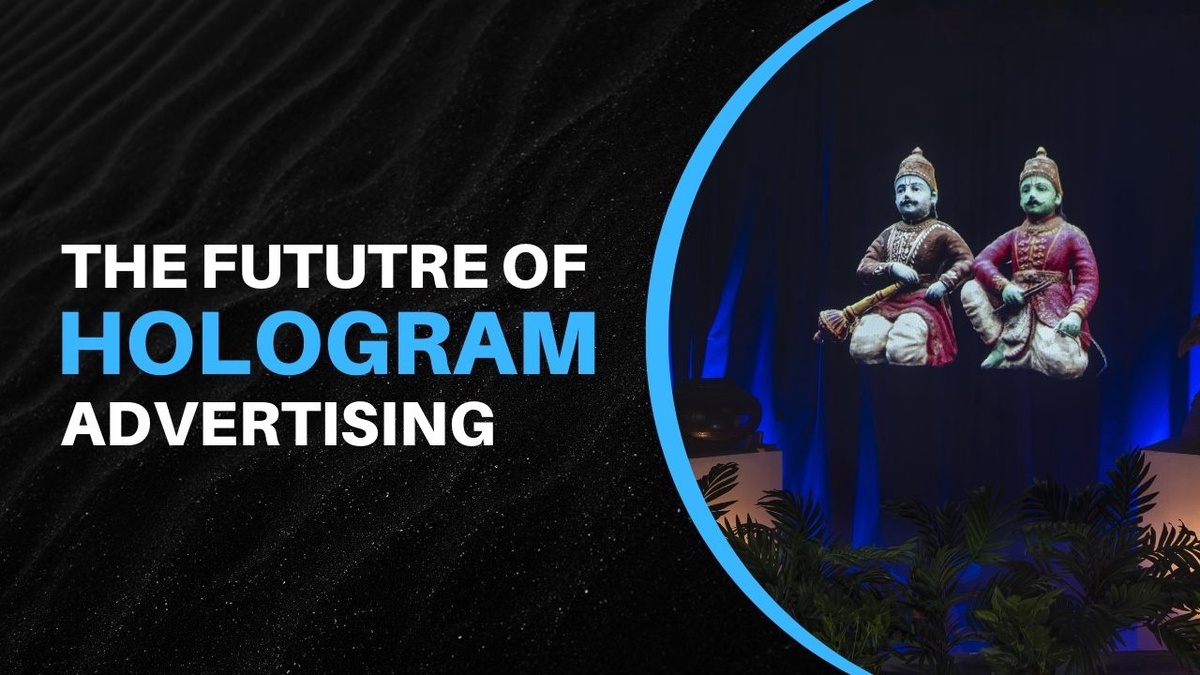Holograms played a significant role in science fiction, but recent advancements in holographic displays are turning these visions into reality. Created by Hungarian scientist Dennis Gabor in 1948, holography has evolved over the years, overcoming initial limitations in materials and power sources. Compare and choose the most appropriate 3D holographic displays with one of the premier holographic display providers i.e., Vision3D. As we delve into the history and future of hologram advertising, we explore the potential impact of this technology on society.
A Brief Overview of the Holographic History
Dennis Gabor's groundbreaking invention of holography in 1948 marked the birth of three-dimensional images created by light. Gabor's technique, which earned him the Nobel Prize in Physics in 1971, involved recording light waves reflected off an object onto a flat surface, allowing the creation of realistic, three-dimensional images. The early 3D character creator was displayed without special glasses, opening up possibilities for various applications.
The Creation of Holograms
Holograms are optical recordings of objects or scenes, generated by combining two light sources. Gabor's original holographic process paved the way for the creation of these three-dimensional images. The word "hologram" derives from the Greek words "holos" (whole) and "gramma" (message), emphasizing the technology's ability to convey complete messages through laser light particles.
Uses of Holograms and Their Impact on Society
3D modelling services find applications in diverse fields, including security and medicine. The ability to create detailed, three-dimensional images aids doctors in closely examining body parts, enhancing diagnostic capabilities. Over the years, holographic displays have undergone significant improvements, with ongoing developments leading to innovative solutions like 'smart mirrors.' These mirrors could revolutionize wayfinding in public spaces, eliminating the need for physical maps or seeking assistance.
Moreover, holographic technology holds the promise of transforming education and entertainment. Virtual classrooms, facilitated by holographic interactions between students and teachers, could bridge spatial and distance constraints. The immersive nature of holograms could revolutionize the learning experience, providing access to educational content previously limited by physical space.
Advantages of Hologram Technology
Hologram technology offers several advantages, revolutionizing various industries and aspects of our daily lives. Here are some key benefits.
- Enhanced Visual Representation - Holograms provide three-dimensional, lifelike representations of objects and scenes, offering a level of visual realism unparalleled by traditional two-dimensional images. This realism is especially valuable in medical imaging, product design, and virtual prototyping.
- Improved Medical Imaging and Training - In the field of medicine, holograms offer a breakthrough in imaging technology. Surgeons can utilize holographic displays for detailed, interactive views of the human body, enhancing pre-surgical planning and intraoperative guidance. Medical professionals can also use holographic simulations for training purposes, allowing for a more immersive and realistic learning experience.
- Innovative Navigation and Wayfinding - Holographic displays, such as smart mirrors, have the potential to revolutionize navigation and wayfinding. By overlaying holographic information in the real world, users can receive intuitive guidance, making it easier to navigate complex environments such as airports, shopping malls, or public spaces.
- Virtual Collaboration and Communication - Hologram technology facilitates virtual meetings and collaborations by creating realistic, interactive representations of individuals in remote locations. This has the potential to transform the way businesses conduct meetings, allowing for more immersive and engaging interactions despite physical distances.
- Educational Advancements - In the realm of education, holograms enable a new dimension of learning. Students can interact with three-dimensional holographic models, gaining a deeper understanding of complex subjects such as anatomy, chemistry, and physics. Virtual classrooms using holographic technology can transcend geographical boundaries, providing access to quality education globally.
The Future of Holograms and Technology's Potential Impact on Society
Recent advancements in holographic projection film signal a future where these technologies become more prevalent in our daily lives. While the early stages were restricted by material and power limitations, ongoing developments are overcoming these challenges, bringing holographic visions from the realm of science fiction into reality.
Smart mirrors, as a tangible application, exemplify the potential societal impact of holograms. Simplifying navigation in public spaces, these mirrors represent a step towards more intuitive and user-friendly interactions with our environment. The days of struggling to find directions in airports or public facilities may be alleviated through the seamless integration of holographic technology.
Beyond navigation, holograms promise to redefine communication and entertainment. Virtual meetings and conferences could be enhanced by lifelike holographic representations, breaking down barriers of physical distance. Similarly, entertainment experiences could become more immersive and interactive, offering audiences a new level of engagement.
Conclusion
As technology continues to evolve, 3D hologram advertising emerges as a transformative force with the potential to reshape various aspects of society. From its humble beginnings in 1948 to the current era of advanced holographic displays, the journey of holograms reflects a remarkable progression.
Holograms are not just about creating visually stunning images; they signify a paradigm shift in how we perceive and interact with our surroundings. Whether in medicine, education, navigation, or entertainment, holograms hold the promise of enhancing and enriching our experiences.


No comments yet